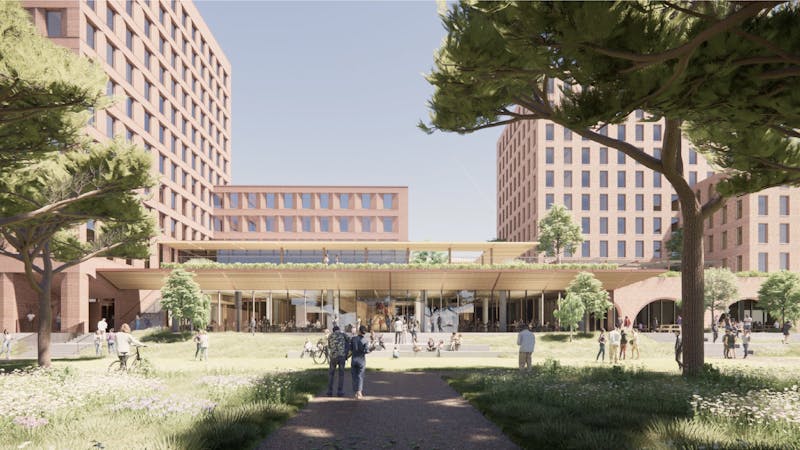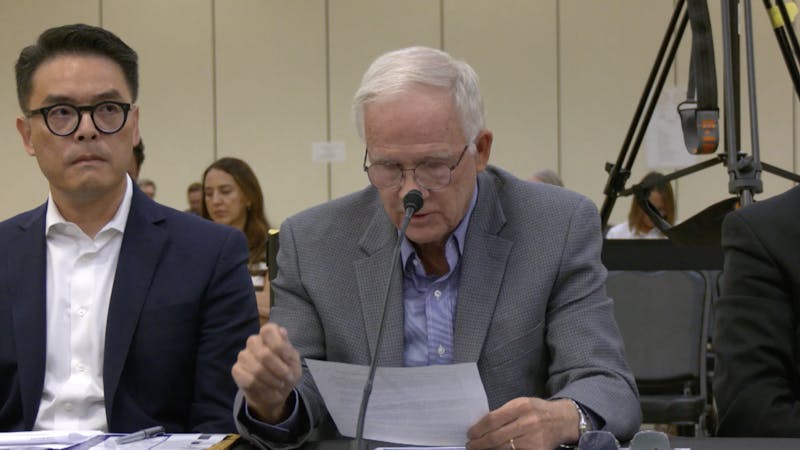New colleges promise growth, opportunities
It's been nearly four years since President David Leebron first unveiled his plans to bring a pair of new colleges into Rice's fold. It's been two years since students first began noticing the signs of construction, from the green fences to the towering cranes. It's been a year since we first began seeing the skeleton of the structures thrown up, beam by beam, mortar and brick and wood alike.At long last, five days ago, McMurtry and Duncan Colleges finally opened their doors to their first classes and began their first foray into the incomparable Rice college system (see story, page 11). They represent the spearhead of Leebron's Vision for the Second Century, a plan to expand Rice's girth and reputation. Sure, there's a tent outside McMurtry that tends to leak when the sprinklers are a bit too strong. And yes, Duncan may have a couple other projects awaiting construction - namely, a servery, but also a fountain (that will hopefully not spray over McMurtry's tent).
But these construction issues were incurred by Hurricane Ike's wrath, and were, by and large, unavoidable. As such, there should be no hard feelings toward the administration if the floors aren't quite as polished or if the sundeck lounges are missing a few chairs. After all, we're sure you're still enthralled with those bathroom pods - complete with flush-buttons! - to pay too much attention to the technical difficulties the card readers have from time to time.
Certain concerns do remain. The two new colleges are directly tied to the increase in class sizes, which comes about without a proportional increase in faculty. However, as Dean of Undergraduates Robin Forman says, the increase in student-faculty ratios will be "infinitesimal." Meanwhile, Will Rice and Baker Colleges will have their work cut out for them in balancing their influence on the two new colleges. Thus far, they seem to be doing a remarkable, admirable job - anyone who attended the lead-up to Tuesday's Rice Rally could see that the Duncaroos and McMurtrians were among the most animated and passionate colleges dispensing cheers.
Rice learned a difficult lesson with the inception of Martel College in 2002, when the ninth college sprung with the vagabonds and social outsiders of other colleges. This time around, however, it appears that the administration has the correct path in mind - inviting a microcosm of the student population to join Duncan and McMurtry's ranks as the years progress, offering the empty spaces to those who best represent the holistic Rice experience.
These two colleges will always be linked in Rice lore, and rightfully so. Their similarities are self-evident. From "smart" air conditioning to (eventual) LEED certification, the two do a heady job of reducing Rice's carbon footprint while enlarging our ranks. Yes, they removed large swaths of Rice's greenery, but have you seen their roofs? More so than that, though, they share a pair of incoming classes who own one of the most unique opportunities Rice students ever see: shaping their college's identity. Picking college governments, designing college crests and concocting public parties fall on the shoulders of these freshmen, whose exposure to Rice has been unlike any seen in nearly a decade. However, we hope that the newly-minted freshmen do not see this as a pressure-packed burden; rather, we hope they see this as a once-in-a-generation opportunity. From all that we've seen during Orientation Week, we have every confidence that they will succeed in ways not previously seen, and that Rice will long cherish Duncan and McMurtry.
More from The Rice Thresher

Rice announces Chao College as 12th residential college
Rice announced that the 12th residential college will be named Ting Tsung and Wei Fong Chao College Aug. 19. The college, set to open in fall 2026, will contain nearly 300 on-campus beds.
Dining access fund announced following on-campus unlimited meal swipes
Rice announced new food assistance programs on Tuesday to account for the controversial change in the on-campus meal swipe plan.

Rice disaster prediction model discussed at hearing on deadly Central Texas floods
The House and Senate Select Committees on Disaster Preparedness and Flooding held a hearing on July 31 in Kerrville to address the deadly July 4 flooding in Central Texas. The flooding along the banks of the Guadalupe River killed 108 people, including 37 children. In the charged hearing, Texas lawmakers and flood survivors criticized the local response to the disaster.


Please note All comments are eligible for publication by The Rice Thresher.